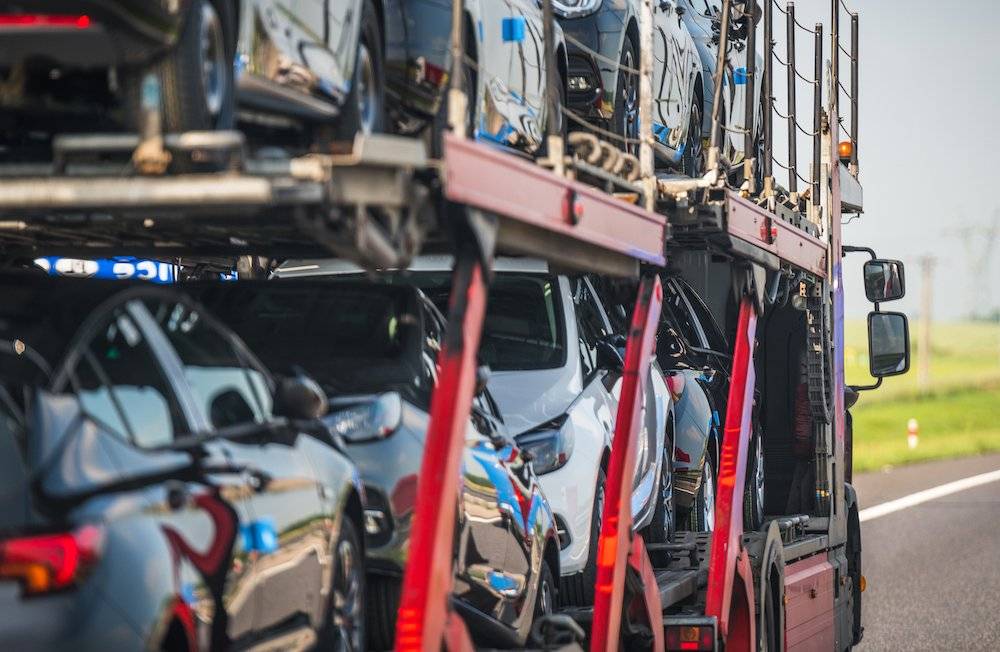Shipping heavy-duty equipment, such as construction and agricultural machinery, bulldozers, excavators, etc., is a completely different process with special regulations and complications. Hiring experts to help handle the process minimizes hassle and maximizes equipment safety.
This article highlights heavy-duty shipping regulations and explains how auto shippers stay compliant with legal requirements after illustrating some unique aspects of heavy equipment shipping.
Heavy-Duty Shipping Regulations
The United States Department of Transportation and the Federal Motor Carrier Safety and Administration regulate the car shipping industry and require car transporters to comply with its laws and rules.
Both parties monitor shippers’ compliance with rules and regulations and control everything related to shipping processes across the country, from issuing shipping certifications and accreditations to dictating load securement measures.
When it comes to heavy-duty shipping, USDOT and FMCSA require heavy-duty shippers to comply with the following requirements:
Tie-Downs
The FMCSA requires using a minimum of four tie-downs on independent corners to secure heavy equipment weighing over 10,000 pounds. In addition, additional tie-downs are needed to secure appendages and other accessories considered large and don’t have a transport lock.
Moreover, tie-downs must be tightly attached and secured, and carrier operators are responsible for ensuring they will not open, unfasten, become loose, or release during transport. FMSCA also requires heavy-duty shippers to use edge protection resistant to crushing and cutting whenever a tie-down is subject to any of these factors.
Heavy Duty Placement and Restraint
Heavy-duty equipment must be restrained by chocks, wedges, and other securing tools that prevent the equipment from rolling while in transit. Indeed, heavy-duty shippers must always check for loose or damaged chains and replace them when necessary.
Drivers must use chains or straps for tie-downs with a weight rating. Furthermore, they must use flags or lights at night if the equipment is more than 4 inches over the side or 4 feet beyond the rear. The equipment must be placed in direct contact with each other and prevented from shifting toward each other during transportation.
Heavy-Equipment Shipping Special Aspects
Heavy-equipment shipping refers to loading huge machinery with greater size and weight into a compatible motor carrier, securing it to the carrier, and unloading it after delivery. Though the process theoretically seems much like shipping any regular vehicle type, the large dimension of heavy equipment actually makes the process more complicated.
Shipping heavy equipment not only requires having the necessary hauling tools and finding a suitable carrier, but it also demands possessing adequate expertise in appropriately handling, securing, and shipping this equipment across state lines.
Therefore, hiring a professional, reliable, and experienced car shipping company to ship heavy-duty equipment across the nation is always recommended. Tempus Logix is a top-rated car shipping company with over eight years of experience shipping all vehicle types across the United States, including heavy equipment. The company has delivered more than 45,000 vehicles and is rated an excellent service provider on many online rating platforms, like
| Platform | Reviews | Rating |
|---|---|---|
|
|
1,821 reviews |
⭐⭐⭐⭐⭐ 4.9 / 5
|
|
|
125 reviews |
⭐⭐⭐⭐⭐ 4.95 / 5
|
|
|
433 reviews |
⭐⭐⭐⭐⭐ 5 / 5
|
|
|
629 reviews |
⭐⭐⭐⭐⭐ 4.9 / 5
|
Staying Compliant with Legal Requirements
Heavy-duty shipping companies stay compliant with the USDOT and FMCSA legal requirements by following these practices:
Follow up to changing laws
Heavy-duty car shipping companies who claim compliance with laws and regulations must demonstrate this compliance by taking serious actions toward legal practices and operations. The laws regulating heavy-duty shipping are prone to changes and differ from state to state. Therefore, shipping companies must monitor updates and changes in each state’s heavy-duty shipping requirements.Train the staff on new policies and regulation changes
Workers in the heavy-duty shipping industry must be aware of changes in shipping regulations and policies to ensure they don’t unknowingly break a rule. Heavy-duty shipping companies can ensure complete compliance by providing their staff with regular training sessions about heavy-duty shipping policies and new requirements.Consult legal specialists
Startups and small businesses, in particular, usually tend to hire a legal team to ensure transparency in their processes and operations. However, hiring legal specialists can be expensive and unnecessary in routinely working facilities. Instead, heavy-duty shipping companies can refer to legal specialists’ consultancy when they need assurance about compliance or need their advice.
Conclusion
In conclusion, shipping heavy-duty equipment is a challenging process greatly different from shipping any other vehicle type. It is rather a more complicated process that requires special care and sufficient experience in handling. Shippers must follow the legal requirements in the states where they ship heavy-duty equipment, obtain the required shipping permits, and adhere to the appropriate load securement practices.
Tempus Logix is a professional, experienced car shipping company accredited and certified by the USDOT and FMSCA. The company works with a huge network of seasoned and qualified carrier drivers who ship all vehicle types nationwide, including heavy equipment, and carry insurance coverage of up to $ 1,000,000.






